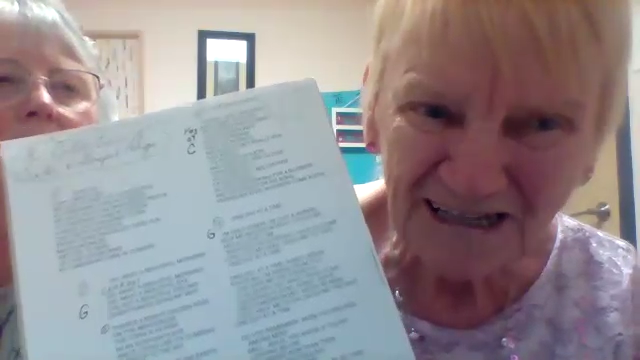Moving is no small feat: there’s ample logistical planning and execution to do, as well as the mental load of leaving behind the old and starting with the new. This is especially true when it comes to folks approaching retirement, some of whom might consider moving on from their family home of decades.
Fortunately, there are practical supports families can lend to seniors during this transition. After almost five decades of operation, our team wants to share eight ways you can help loved ones transition to a retirement home, both before and after move-in day.
Before:
To ensure a smooth transition, conversations about moving into a retirement home should be done with plenty of runway — these are not easy decisions to make!
As a supportive family member, your job is to assist. Ultimately, your loved one should be in the driver’s seat; this is their own move to make.
1. Take tours of different retirement homes
Each retirement home has a unique look and feel, so it’s crucial to scope out several options with your loved one before making a commitment — the same way you would attend house showings before renting or buying. At Caressant Care, we have 10 retirement homes across Ontario for you to consider.
2. Get reviews from current retirement residents
No matter how many Google reviews and online guides you can find and read ahead, retirement living can be pretty different in reality. This is why you should consider connecting with someone already living in a home to get the inside scoop, while still keeping in mind that every person’s experience will vary.
This person could be a close friend, a family acquaintance or even a fellow senior your loved one might meet during a tour. Their testimonials can help narrow down your search, inform you and your loved one about whether a particular home is a good environment and shed light on retirement living overall.
3. Make a list of important dates
Many folks find it more efficient to divide up moving into a series of smaller tasks, rather than cramming everything into one big day. If this is the case for your family, we recommend scheduling all the appointments you’ll need to make in your calendar and having it easily accessible. You can also add reminders to stay on top of the process.
Some examples of the dates you want to keep track of include:
- Home tour dates
- Last day for packing
- Self-storage loading day
- Last day to cancel services for hydro, heat, internet, etc.
- Move-in day, as agreed upon with the retirement home
4. Lend a hand packing
The most tedious and physically demanding aspect of moving is probably the days spent packing up belongings — sorting large amounts of items into keep vs. give away piles — so this is a great time to roll up your sleeves and lend a hand to your loved one. Alternatively, if you’re shorter on time than budget, there are professional services catered to helping seniors move.
It’s a great idea to bring along personal keepsakes like pictures to provide a sense of familiarity in their new home. Just keep in mind, while we love adding personal touches, we need to stick to certain guidelines for each home and might need to limit or deny items that don’t fit our guidelines. Nonetheless, don’t shy away from helping your loved ones pick out some fresh decor items to really mark the move while still making the space feel like their own!
5. Designate roles of support within your family
In households of multiple children and grandchildren, the bulk of the work may easily fall onto one or two people if not previously delegated clearly. This can quickly take a toll; therefore, we recommend designating roles of support early on, with as many details as possible.
Go over all potential concerns and appointments made, then ask within your family: who can drive your loved one to a home tour on a weekday? Who will be around to help with packing over the next two weekends? Who will be the main point of contact with the retirement home? Being organized ahead of time will help avoid unnecessary conflict.
After:
The first couple months in a new retirement home can be critical to a senior’s mental health. Ongoing support is especially important during this time.
1. Get to know their caregivers
Your loved one’s new caregivers — in this case, us at Caressant Care — will be the next group of people to keep them company, have a direct impact on their mood and spend time around the clock with them in general. For this reason, it would be worthwhile to get to know the staff supporting them.
In return, we’d love to hear from you about your family member’s habits, preferences and who they are as a person, so we can best assist their life in retirement.
2. Aim for a fixed visiting schedule
A lot of residents experience homesickness during their initial time in a new home. Being able to count on family visits provides them with peace of mind, knowing in advance exactly when they will see familiar faces. This gives them something to look forward to through the days.
As staff, we can say with certainty that nothing we provide will light up your loved one’s eyes like the moment they see friends and family! You can always discuss and readjust the frequency later, so try your best to honour the dates already set to help your loved one lessen the anxiety and adjust to their new routine faster.
3. Keep a pros and cons list of why they moved
In line with the initial feelings of homesickness, your loved one may be repeatedly asking to move back home during this transition period, despite having gone forward with the decision. It can be overwhelming and conflicting for families to navigate these interactions: while you care greatly about your loved one’s happiness and may feel guilty, you have also sat down together and weighed the reasons why living in a retirement home is the best option for them today.
This is when a pros and cons list with some outlined bullet points could come in handy, and you can even make a copy for your loved one to hold onto if desired.



